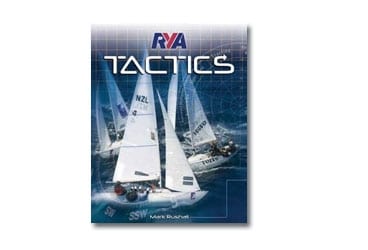
GUTactics368
In June of 2006, I had the pleasure of sailing the centennial Newport Bermuda Race on the Volvo 60 Pindar. Of course, like many ocean races, time has made the memory a little fonder. It wasn’t exactly the most exciting race–we basically never saw more than 12 knots–and we didn’t do well. But it was better than a week in the office.One of my strongest memories from that race was the start. It was a crazy day at the southern end of Narragansett Bay. Between the 250-plus entries, and the spectator boats, getting across the line cleanly was an adventure. But I remember how deftly our tactician navigated a challenging shy reach start with some of the East Coast’s finest grand-prix yachts. Mark Rushall was able to paint a picture not only of what was going on at the time, but also what would happen a minute later. His stream of information was steady, yet not overwhelming, and was a key component to our solid start.As it turns out, giving advice like that is what Rushall does for a living. He’s a decorated dinghy and keelboat sailor in Great Britain and a sought-after coach. He’s put his years of experience into a new book called RYA Tactics, published by Great Britain’s Royal Yachting Association.Just leafing through the book you can tell that Rushall is a compulsive note taker. He draws heavily on his experience and much of his advice is based around real-world situations. If you’re looking for a tuning guide for your boat, or advice on prepping a bottom or trimming your sails, look elsewhere. But if you want to know how to play the nautical chess game that is key to so many one-design classes, this is a great guide.Rushall’s book is an engaging mix of photo sequences, illustrations, and text. The tactics move seamlessly from the basic tenets of one-design racing to more complex concepts, and everything is easy to understand thanks to the clear prose and ample artwork.I particularly like the detail that Rushall affords each part of the process. He spends the first third of the book–more than 60 pages–talking about pre-start preparation. How many times have we heard expert sailors stress the importance of pre-race research? The windward mark alone occupies 16 pages. My favorite tidbit in that chapter was the slight duck Rushall recommends when you’re on layline and a boat is crossing your stern wondering whether to follow you in to the mark. A quick duck at the right time and they think you’re not laying the mark and carry on a bit further, giving you some valuable breathing room.Rushall’s book runs just less than $30 and can be found at www.amazon.com or www.bluewaterweb.com among other places.A PDF of an excerpt from the book published by Yachts & Yachting can be found here.









